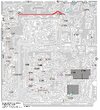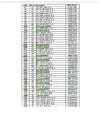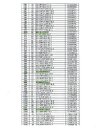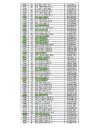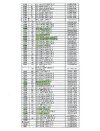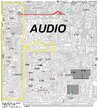bfrqrv,
I know it seems like if you give very good details that an experienced tech should be able to start you down the right path, but unfortunately there can be many causes for the same issues and you really need to understand the theory behind how all the circuits work in order to interpret the data you gather while you are troubleshooting.
also please understand that many of us have been down this road on an internet forum many times and have spent lots of time typing up long answers and suggestions/lessons, only to have the thread go nowhere once the OP realizes that they are just out of their depth. some come in and say thanks anyway, but most just disappear leaving a thread with no solution.
in your particular situation my advice is to find a voltage chart for all the ICs and transistors in that radio, and start going through each one, looking for voltages that don't seem to line up with what should be there.
if you find a section of the radio with a transistor that doesn't have the right voltages on it then we have a place to start helping.
also, know that electrolytic capacitors in particular have a life span and can eventually start to act like resistors when they get old and dry out.
many times, simply replacing all the electrolytics and aligning the radio can solve the problem. maybe not the best troubleshooting method but it has worked many times.
quite a few of us will not even take an old radio in for repair unless the customer agrees to have the radio re-capped.
shipping back and forth is expensive!
LC
I know it seems like if you give very good details that an experienced tech should be able to start you down the right path, but unfortunately there can be many causes for the same issues and you really need to understand the theory behind how all the circuits work in order to interpret the data you gather while you are troubleshooting.
also please understand that many of us have been down this road on an internet forum many times and have spent lots of time typing up long answers and suggestions/lessons, only to have the thread go nowhere once the OP realizes that they are just out of their depth. some come in and say thanks anyway, but most just disappear leaving a thread with no solution.
in your particular situation my advice is to find a voltage chart for all the ICs and transistors in that radio, and start going through each one, looking for voltages that don't seem to line up with what should be there.
if you find a section of the radio with a transistor that doesn't have the right voltages on it then we have a place to start helping.
also, know that electrolytic capacitors in particular have a life span and can eventually start to act like resistors when they get old and dry out.
many times, simply replacing all the electrolytics and aligning the radio can solve the problem. maybe not the best troubleshooting method but it has worked many times.
quite a few of us will not even take an old radio in for repair unless the customer agrees to have the radio re-capped.
shipping back and forth is expensive!
LC

